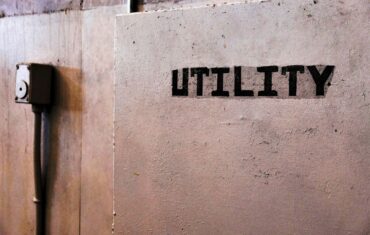Paying off the mortgage is an exciting achievement for the American homeowner. In Scotland, it’s said they celebrate this milestone by painting their door red. Unfortunately, the celebrations for accomplishing this important life goal shouldn’t start too soon. Until the homeowner receives a payoff verification letter from their lender AND the mortgage lien release or satisfaction is officially recorded, the lien will remain on the property as a title defect.
Many homeowners mistakenly believe that the letter they receive from their lender verifying the loan is paid in full is all there is to it. This is incorrect.
Here are the things every homebuyer and homeowner needs to know about mortgage liens and how to ensure they’re properly released.
What is the Difference Between a Payoff Letter and Mortgage Lien Release?
For starters, it’s important to understand what the difference is between the two documents:
Payoff Letter: a pre-closing document that details the exact amount of money needed to fully pay off your mortgage loan
Mortgage Lien Release: a post-closing document that proves the borrower has paid off the mortgage in full, freeing the loan’s lien on the property and giving the title to the borrower.
What’s a Payoff Letter?
A payoff letter or payoff statement can take two major forms in real estate.
- A statement breakdown of money owed to a lien holder
- A verification letter from your lender that they have received payment in full for your mortgage loan
The first is a disclosure from the lender clearly stating the total amount due a borrower must payoff to terminate a loan agreement. These types of payoff letters can also contain other important details like:
- The remaining payment schedule
- The interest rate
- The money saved for paying early
Other kinds of payoff letters are those that come from any third-party that has a security interest in your property’s title, or a lien. The letter provides notification that a legal claim has been made to seize the property if full payment is not received. An example of this could be the governing authority that provides utilities to your property placing a lien against your home for unpaid water or sewer bills.
A lien holder’s payoff letter usually includes the following:
- A good through date — this is the deadline to make the specified payment, if missed, interest will cause the amount to change
- If paying by wire transfer, where to send the money
- If paying by check, who to make it out to and if a cashier’s check is required
- Any charges to include in your payment for outstanding penalties or account closing fees
- Prorated amounts should you pay before or after the good through date
The balance on your mortgage statement is not your payoff amount!
Due to the nature of interest charges, predicting exactly how much you’ll need to pay the remaining balance of your loan can be tricky. Writing a check using the loan balance shown on your last statement won’t cut it. There’s a good chance that if you use this method to satisfy your mortgage, you’ll fail to pay everything you owe.
The first step in paying off the remainder of your loan early and getting a mortgage lien released is requesting a payoff letter from your lender. This helps you avoid any surprises or frustrations by providing all the information you need in one document.
During the sale of a home, this payoff letter is typically obtained by the title company or real estate attorney assisting in the closing. In order to transfer the title from the seller to the buyer, the current mortgage lien must be satisfied or released in the public record. Once the loan is paid off through the funds from the sale, a release or satisfaction will be filed with the same county clerk or recorder that files the new owner’s deed and mortgage. If the old mortgage isn’t properly cleared from the title, it will remain a “cloud” or defect on the new owner’s title.
Timing is everything in a real estate transaction, especially since there are a lot of moving pieces of due diligence to coordinate between several professionals and the buyer. The title agent alone must gather a myriad of documents required to write and issue the title insurance policies. The payoff letter is an important instrument to ensure all funds and liens are released and the title is clear to close in a timely manner. A delay in the closing date could result in the payoff letter amount becoming invalid, requiring a new letter and matching funds to move forward with the sale.
In addition to paying off your loan early and selling your home, a payoff letter is needed for refinancing your mortgage.
How do I request a payoff letter?
Contacting your lender is the first step to getting your mortgage lien satisfied. Every lender will have different methods for borrowers to request this statement. For online lenders, they will usually provide a payoff quote detailing the exact amount needed to be paid on a specific date. Traditional financial institutions may require borrowers to call a customer service department to get the statement.
Avoid getting a verbal quote. This may give you a rough estimate of what is left on the loan, but its not legally binding, so if you try to make a final payment with this information, you may fall short of the amount.
Some of the usual costs associated with early mortgage loan payoff include:
- Prepayment penalties – this will be in the fine print of your loan agreement
- Generation fee – most lenders will charge a small fee to create and send the payoff letter. Ask a customer service representative for details. Some lenders may charge a convenience fee for sending the letter by email or fax but send it free of charge by mail.
- Processing fee – this is the fee associated with processing the payment and closing out the loan account.
Before you incur any of these fees in gathering this information, be sure you are truly ready to pay up. This way you won’t have to make the request and pay the fee a second time.
Payoff Letter as Verification
Another kind of payoff letter a homeowner might receive is the one from your lender verifying that the loan is paid in full and the mortgage lien can be cleared.
Should you receive this letter verifying the loan is paid off, don’t simply file it away assuming everything is free and clear. The next step is to confirm if a mortgage release has been filed within your state’s required time frame. In most cases, the lien holder (the lender in this case) should send the release to be recorded within 30-90 days. If you aren’t sure what the requirements are in your area, reach out to your real estate agent, title agent, or real estate attorney for guidance.
Why does a mortgage lien release matter after buying a home?
Download our guide: 7 Reasons You Need Release Tracking!
A mortgage lien is the legal claim the lender has on your home should you default on the loan. As a result, a mortgage lien release is required to free the title and the borrower from that lien. The release does not erase the lien. Instead, the release is filed as a subsequent and corresponding instrument in the public record. It may also be called a satisfaction or deed reconveyance.
This document indicates that the borrower is released from the mortgage debt and the property title is officially transferred from the lender to the borrower.
A new homeowner’s title will be clouded if the old owner’s mortgage isn’t released after closing!
Sometimes, the title company will follow up to make sure the release of the previous owner is recorded as a part of issuing their policy as well as any other documents like HELOCs (Home Equity Line of Credit), judgments, lis pendens, etc. If the lender doesn’t provide a mortgage lien release before closing, the title agent will usually follow up with the lender or county and make sure it’s properly recorded. Sometimes things can slip through the cracks due to lack of communication or miscommunication with lenders or a lien release may simply get lost in the massive amounts of paperwork facing staff. Ultimately, a new homeowner may want to check on the status of the recordings themselves after closing.
For homeowners paying off their mortgage early, you should follow up with the lender or county clerk after sending in the payoff amount to ensure that the lien release was recorded in the public record.
How to Get a Mortgage Lien Released as a Current Homeowner
Watch the video below for quick tips to make sure your mortgage lien is properly released in the public record.
How to check if your mortgage release is properly recorded
While it may be frustrating for borrowers to have follow up with their lender, it will ultimately spare you as the homeowner any headaches on down the road, especially should you want to sell your property. It’s better to be sure this is resolved as soon as possible than to risk having to track down your old lender to get a mortgage satisfaction recorded years later.
Once you have received the verification letter from the lender that all funds have been processed and paid, the document noting the release of the mortgage lien will need to be created and filed with your property’s county clerk.
This information is publicly accessible and you can do a quick online check with your county clerk’s website. This information is usually found under the land records. You can search by owner name, date filed, and document type. If you’re a new homeowner, search the previous owners name to confirm there is a mortgage and a release recorded in their name for your property address. If you’re a paying off a mortgage early, search by your name.
Some of the common terms for this document are:
- Mortgage release
- Release of mortgage
- Satisfaction of mortgage
- Mortgage satisfaction
- Deed of reconveyance
- Release of trust deed
If your lender has sent any of these documents along with the payoff verification letter, you have everything you need to record the release yourself. To record this document, check your county clerk’s instructions and follow them carefully. There is usually a fee associated with recordation.
If you just closed on a home and bought title insurance and see no release 90 days after closing, contact the title company that was involved with your transaction. Recording fees are usually a part of the closing costs, so be sure this isn’t a fee you’ve already paid for. Reach out to the title agent or your real estate attorney to see if they can resolve this issue. Until the old mortgage lien is properly released, it will remain as a cloud on your title, impeding your ability to sell the property in the future.
For early payoff, if you have received the verification letter from the lender, give your lender some time to release the lien (up to 90 days in some states). If there is still no release, contact the Lien Release Department to find out why there is no recorded release.
A mortgage lien holder has a legal obligation to release the lien when the debt is paid. However, since this final step isn’t generating income, just more expense for processing and recording, it’s not treated as a top priority. Be persistent by calling, emailing or even visiting the lender in person.
Avoiding Missed Recordings with Release Tracking
Release Tracking is a service utilized by real estate attorneys and title agents to ensure that all documents affecting a homeowner’s title are properly recorded in a timely manner. That includes all documents listed in the title commitment, like mortgages, HELOCs, judgments, UCCs, and lis pendens.
Settlement agents work with third party support companies like PropLogix to ensure the homebuyer is protected from any future issues that will require costly title curative work. When a post-closing document isn’t found in the public record, we work to resolve the problem on behalf of the settlement agent and the homebuyer.










